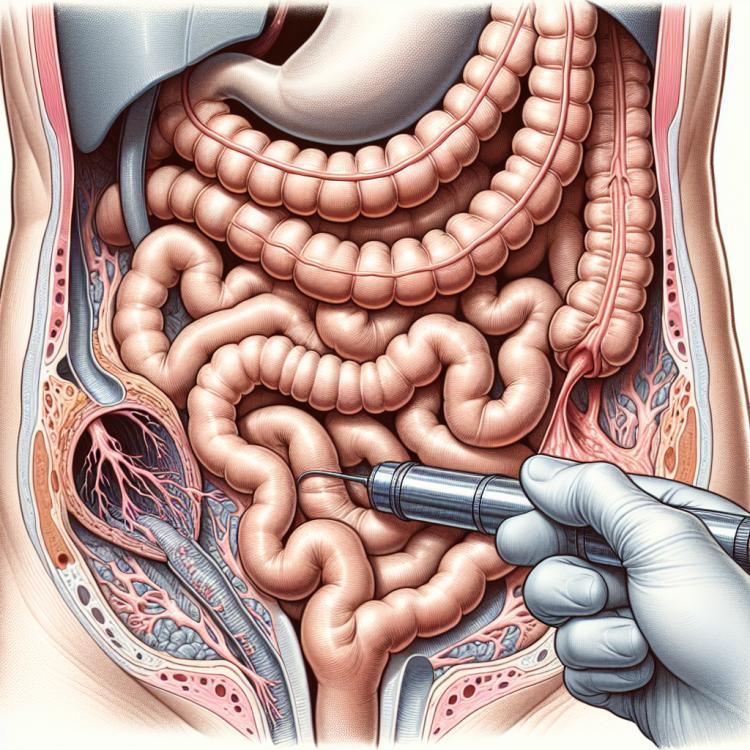
Bowel obstruction: symptoms, causes, and treatment.
- Understanding bowel obstruction
- Etiology of intestinal obstruction
- Clinical picture of intestinal obstruction
- Prospects for treating intestinal obstruction with lautzą specialists
- Methods for diagnosing intestinal obstruction
- Therapy for intestinal obstruction
- Measures to prevent intestinal obstruction
- Amazing aspects of intestinal obstruction
- FAQ
Understanding bowel obstruction
Intestinal obstruction refers to a condition in which there is a partial or complete disruption of the passage through the intestinal tract due to blockage of its lumen. This is a serious medical condition that requires immediate intervention to prevent dangerous consequences, such as tissue necrosis or peritonitis. Understanding the mechanisms of intestinal obstruction development, risk factors, and symptoms plays a key role in timely diagnosis and the assignment of effective treatment for this pathological condition.
Etiology of intestinal obstruction
The etiology of intestinal obstruction lies in various pathological processes that can cause a disruption in intestinal permeability. One of the main causes is mechanical obstruction, such as tumors, adhesions, or intestinal injuries. Functional causes, including parasitic infections or intestinal spasms, can also be a significant factor in the onset of obstruction. It is important to consider both genetic factors and acquired diseases in understanding the causes of intestinal obstruction, which aids in choosing the most effective treatment approach.
- Mechanical obstruction: includes tumors, adhesions, intraluminal strictures.
- Functional causes: including parasitic infections, intestinal spasms, infectious diseases.
- Congenital defects: genetically determined anomalies that can lead to intestinal obstruction.
- Inflammatory processes: such as chronic colitis or ulcerative colitis, can lead to narrowing or blockage of the intestines.
- Foreign objects: swallowed items or masses that can cause obstruction.
Clinical picture of intestinal obstruction
The clinical manifestations of bowel obstruction may include abdominal colic, nausea, vomiting, constipation, or diarrhea. Patients may also experience abdominal bloating, nonspecific pain, digestive disturbances, and absence of gas and stool. In the case of partial bowel obstruction, symptoms may be less pronounced, while complete obstruction can lead to severe clinical symptoms requiring immediate medical intervention.
- Abdominal cramps: patients may experience intermittent pain in the abdominal area caused by contractions of the intestine in an attempt to overcome an obstruction.
- Nausea and vomiting: occurring due to impaired passage of contents in the gastrointestinal tract, which can lead to dehydration and electrolyte imbalance.
- Constipation or diarrhea: changes in bowel habits may occur depending on the location and degree of intestinal obstruction.
- Abdominal distension: patients may experience an increase in abdominal volume due to the accumulation of gas and intestinal contents.
- Non-specific pain: pain may vary in intensity and localization, including the abdominal area, luggage area, or groin region.
Prospects for treating intestinal obstruction with lautzą specialists
Experts in the medical field emphasize significant progress in the treatment of intestinal obstruction. One of the key aspects is timely diagnosis, which allows for the determination of the type of obstruction and the nature of the impediments for effective selection of therapeutic methods. Modern medical technologies and surgical techniques also play an important role in the successful treatment of patients with intestinal obstruction, providing an individualized approach depending on the specifics of the case.

Methods for diagnosing intestinal obstruction
The diagnosis of intestinal obstruction includes a variety of methods, ranging from clinical examination and patient history to instrumental and laboratory studies. The doctor may conduct a physical examination to identify signs such as an enlarged abdomen, tense abdominal muscles, altered bowel sounds, and tenderness. Additional diagnostic methods may include radiographic studies, computed tomography, endoscopy, ultrasound examination, and laboratory tests, which allow for a more accurate determination of the cause and location of the obstruction.
- Physical examination: The doctor examines the patient, analyzing symptoms and signs such as abdominal distension, tension in the abdominal wall, and how long it takes for the abdomen to become less resonant after percussion.
- X-ray: X-ray images of the abdominal cavity may be used to determine the presence and location of intestinal obstruction.
- Computed tomography (CT): CT scanning can help clarify the cause of the obstruction and determine its characteristics.
- Endoscopy: Examination of the intestines using an endoscope can be conducted to visualize the area of obstruction and obtain biopsy material.
- Ultrasound examination: Ultrasound can be a useful method for diagnosing intestinal obstruction, especially in pregnant women or patients with special medical considerations.
Therapy for intestinal obstruction
- Surgical intervention: In the case of mechanical bowel obstruction, surgery may be necessary to remove the cause of the blockage, such as a tumor or adhesions.
- Conservative treatment: In the case of partial bowel obstruction, the doctor may try conservative methods such as diet, pain relievers, and observation.
- Rehabilitation measures: After surgical intervention or conservative treatment, it is important to undertake activities to restore normal bowel function and prevent possible complications.
- Comprehensive approach: In some cases, a combined treatment approach is required, integrating surgical methods with conservative therapy for the best results and preventing recurrence.
- Individual approach: Treatment for bowel obstruction should be individualized, taking into account the patient’s characteristics, degree of obstruction, and cause of the blockage for optimal results and prevention of complications.
Measures to prevent intestinal obstruction
- Maintaining a healthy diet rich in dietary fibers to support normal intestinal peristalsis and prevent constipation.
- Drinking enough water throughout the day to ensure normal bowel function and prevent dehydration.
- Regular physical activity to stimulate intestinal motility and maintain overall gastrointestinal health.
- Avoiding excessive consumption of fatty and hard-to-digest foods that may contribute to intestinal difficulties.
- Timely seeking medical assistance at the first signs of abdominal disorders or changes in bowel activity to prevent potential obstruction.